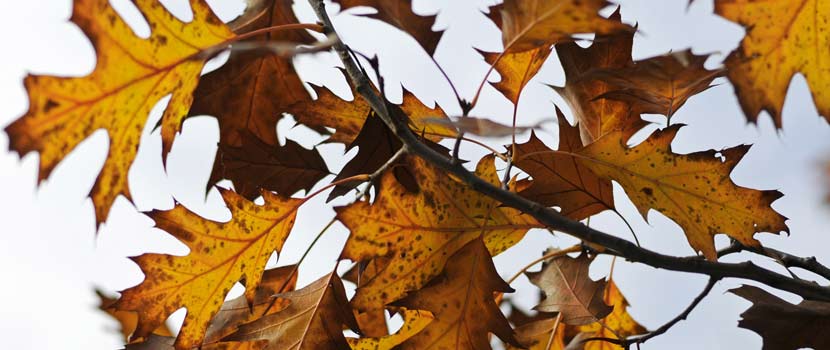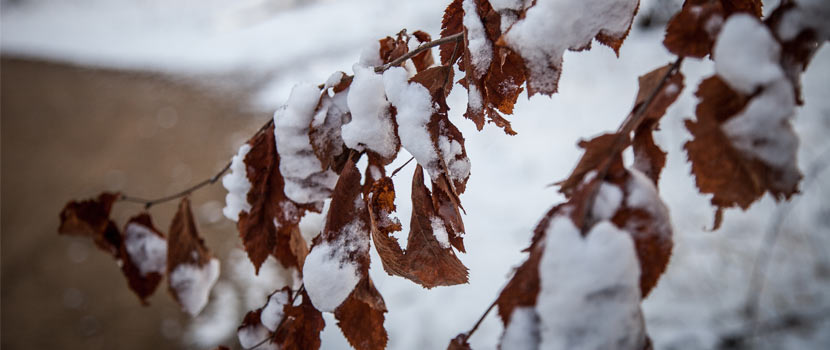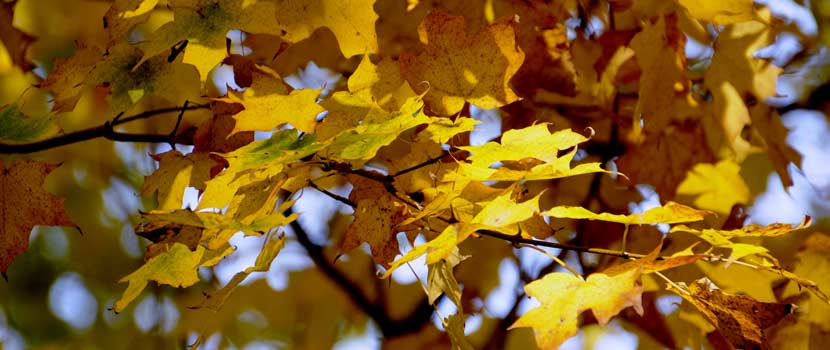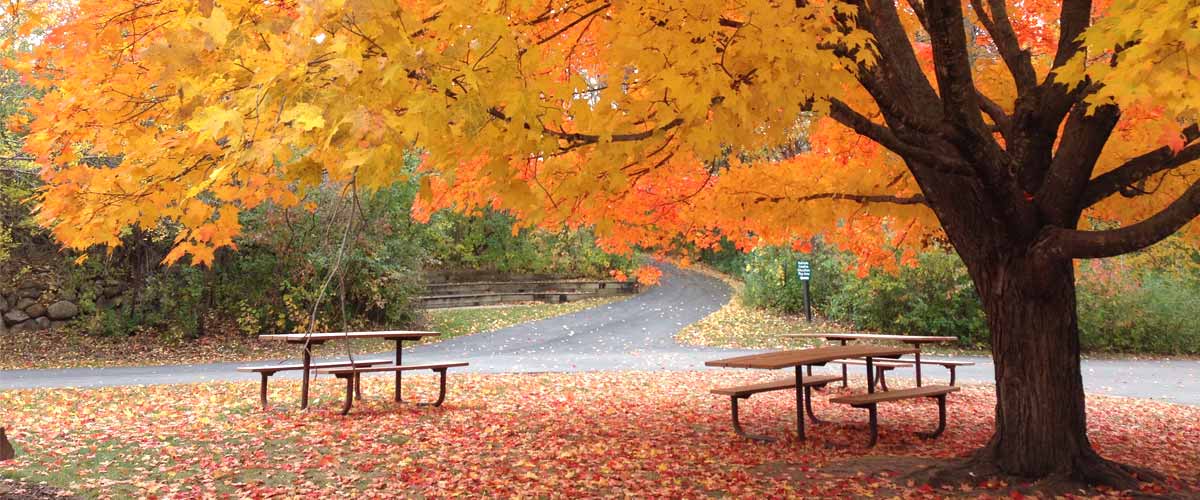
Sugar maples are some of the most well-known native trees around the Twin Cities. They are fan favorites in the fall, thanks to their often bright hues, as well as in the spring, thanks to maple syruping.
They are so well-liked that there are at least 11 different selections, or cultivars, of this species available at most nurseries. Canada likes this tree so much that it put it on its national flag!
Sugar maples are major components of Maple-Basswood forests, one of two major native forest types we have here at Three Rivers Park District (the other being Oak-Aspen-Hickory).
Much of the Park District sits within the historic “Big Woods” forest range. The term Big Woods was the name that French explorers gave the forests of this area after they encountered it for the first time. The name refers to a forest with tall, cathedral-like trees and an understory that is easy to navigate compared to the more densely vegetated understory of oak forests.
Lake Rebecca Park Reserve and Baker Park Reserve are the primary Big Woods parks in Three Rivers. This means that all of the reforestation efforts within these parks will resemble the vegetation you would have found within the Big Woods at the time of European settlement (circa 1850).
In addition to being a major forest component, sugar maples can be found in every active use/picnic area within the Park District due to the significant amount of shade they provide.
This Tree Is Shady
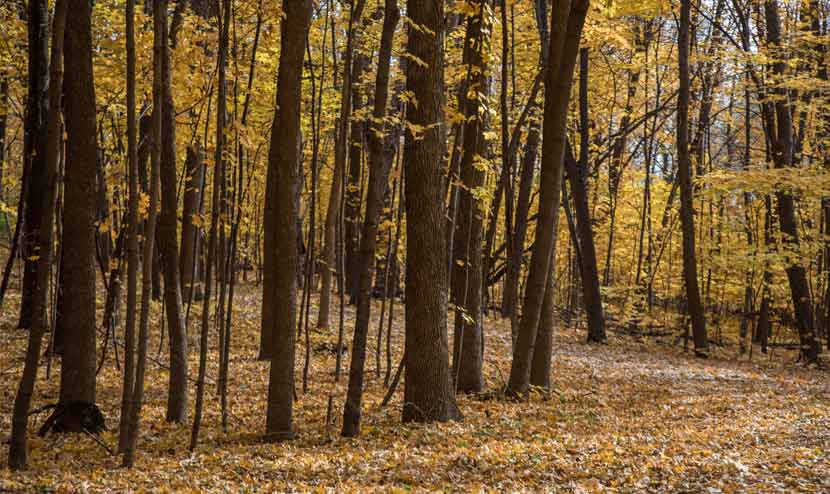
Sugar maple is a very shade-tolerant tree and a terrific shade producer. If you are considering planting one, however, know that they are not at all tolerant of salt, and do not like soil compaction or hot, dry areas.
The sugar maple forests of today are known for their dense shade and open, almost nonexistent, understory. This characteristic is both good and bad.
On the plus side, most undesirable species, such as buckthorn and other non-native shrubs, cannot grow under these low-light conditions. On the negative side, most desirable species cannot grow there either. Add exotic earthworms to the mix and you have a forest floor that is often devoid of vegetation and leaf litter for much of the year.
This creates the potential for significant soil erosion in some areas. In a landscape setting it is often difficult to grow turf grass under mature sugar maples due to this shading effect.
Because of this dense shade, these forests are known as climax forests. This refers to the fact that the only species that can reproduce under these low-light conditions are sugar maples themselves. In fact, absent some outside disturbance (like fire) most of our forests would likely convert to sugar maple-dominant forests, though this would take many, many years.
What’s in a Name?
The sugar maple has several common names, depending on what part of the country you live in. Among these are hard maple, rock maple, and bird’s eye maple.
The official botanical name is Acer saccharum. The word Acer may be derived from the Celtic word ac which meant “hard” and likely referred to the denseness of the wood. Acer is also Latin for “sharp,” which may refer to its pointed leaves. Saccharum is the Latin word for sugar and certainly refers to the sugar content of its sap, which is about twice that of other maples.
How To Identify Sugar Maples
A good place to start with identification is to look at branching patterns. Maples have an opposite branching pattern, which means that twigs, leaves, buds and branches grow directly opposite from themselves. This is handy because there are only a small number of trees with this characteristic.

MADCap Horse is a decent mnemonic to remember this. In our area only Maples, Ash, Dogwood, Caprifoliaceae (honeysuckle) family shrubs, and Horse chestnut are opposite branching.
Most people know a maple leaf when they see one, but for reference, sugar maple leaves have five main lobes per leaf. The outer two lobes will likely be much smaller than the three main, inner lobes, which tend to be about the same size.
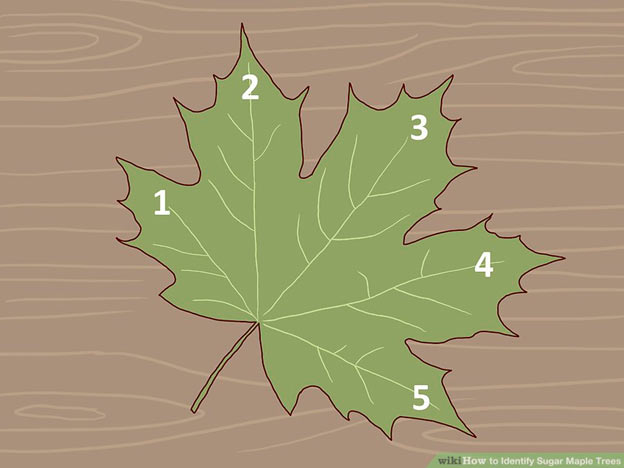
Other maples will either have much smaller lobes (as with red maple), or the main lobes will be more deeply divided (as with silver maple), or not have lobes at all (as with boxelder).
There is one non-native maple tree that has leaves that look very, very similar to sugar maple. This tree is the Norway maple (Acer platanoides), and it has been widely planted throughout the region as a street tree. If you live in any city or town around here, chances are you have already seen this tree.
The very big round buds on this tree are a dead giveaway because they are very different from those of the native sugar maple.
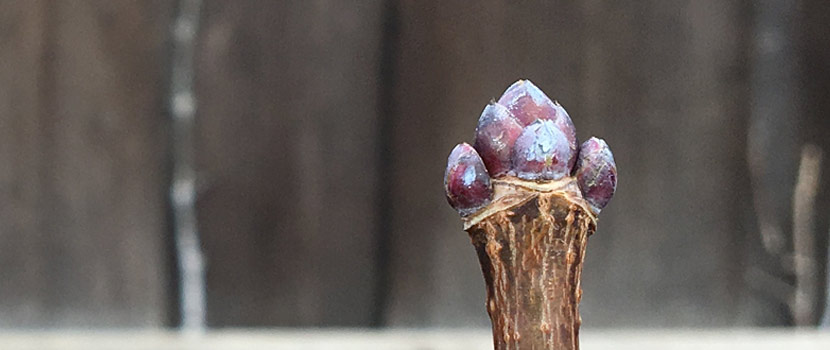
The buds of the sugar maple tree, on the other hand, are reddish-brown in a tight, pointed, conical shape with rows of scales offset 90 degrees from one another. No other maple has this pointy, conical bud shape.
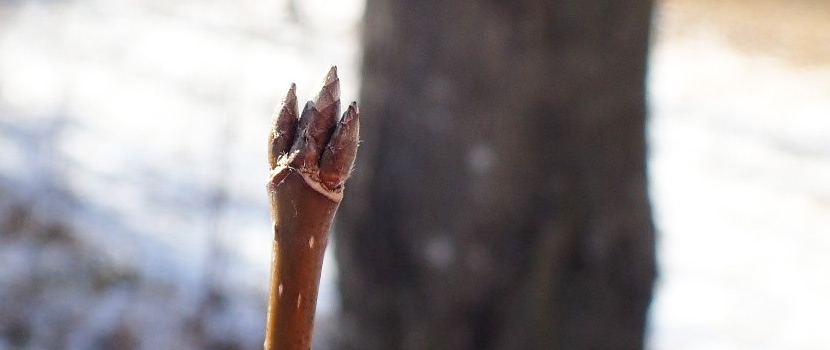
The seeds of sugar maples are paired samaras, which are a papery, winged form that helicopter their way down from the tree and easily clog gutters and drains. Pollination happens via wind and occurs in the spring, usually from March to April. Trees become seed-bearing age around 20–30 years old.
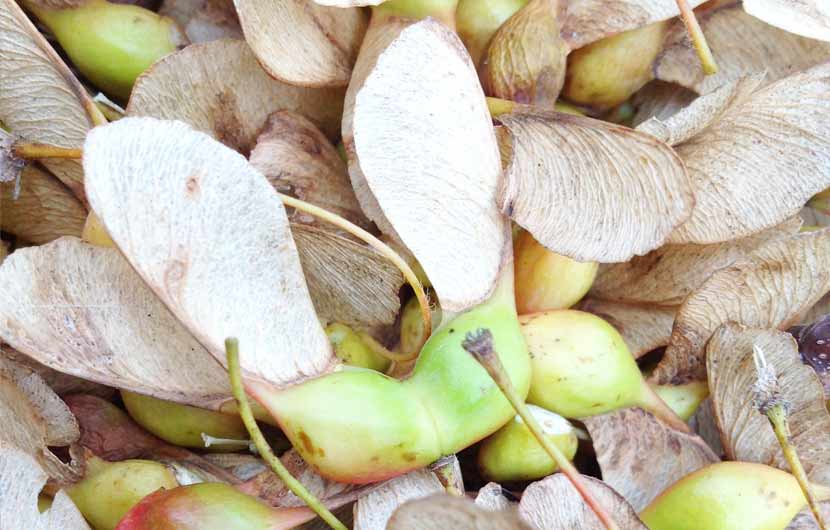
Propagating and Growing a Sugar Maple
Here are some tips from our own plant propagator, Lois Larson:
In early to late August, begin looking for sugar maple trees with seeds. Watch as seeds continue to ripen and begin to fall in September. Try to collect seeds without blemishes and that no longer have a deep green color. Ripened seeds will be yellow, reddish, or tan. Samaras will have brown wings.
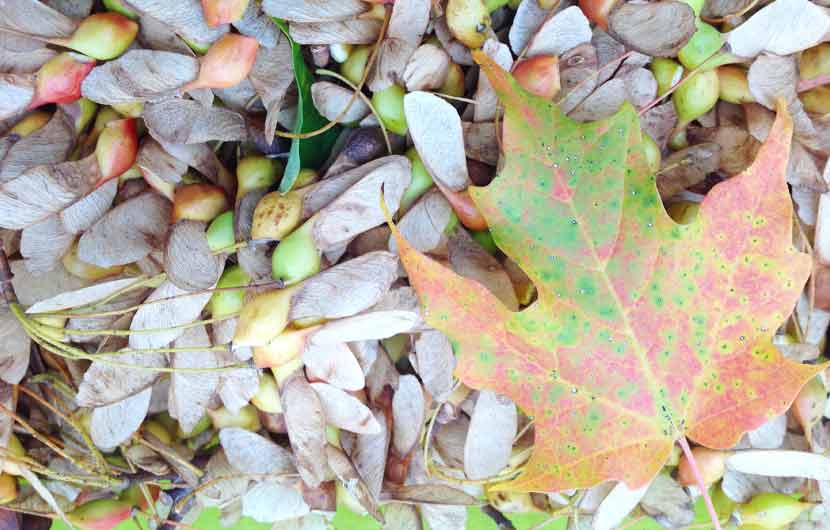
You can collect directly from the tree or pick from the ground. Place your collected seeds in a paper bag and store in cool area away from direct sunlight.
Within a week or two of collection, plant seeds directly on the soil, ensuring soil contact. Seeds should be covered with approximately ¼- ¾ inch of soil. You may cover with hardware cloth or screen if rodents are an issue, but remember to remove the screen in early spring.
Leaves falling naturally in the autumn will cover the planted seed so it’s best to stake or mark the area. Normal rains will promote germination as the soil warms, generally in late April or early May.
Finally, some shade is recommended for the growing of the actual seedlings.
Maple seeds will also germinate in your house gutters, depending on how long they go without cleaning. That’s fun to deal with!
Managing Sugar Maple Forests
Sugar maples are favorites of white-tailed deer, which commonly browse and rub them. Any physical barrier to keep deer away from the trunk of the tree will help prevent this.
Deer, however, are not the main pest we deal with when we plant sugar maples. Meadow voles, mice, rabbits, and even squirrels all like to nibble on the bark. Too much nibbling can girdle the tree and kill it. To protect our investments, we typically install tree protection at the base of the tree in an attempt to ward off these potentially devastating pests.
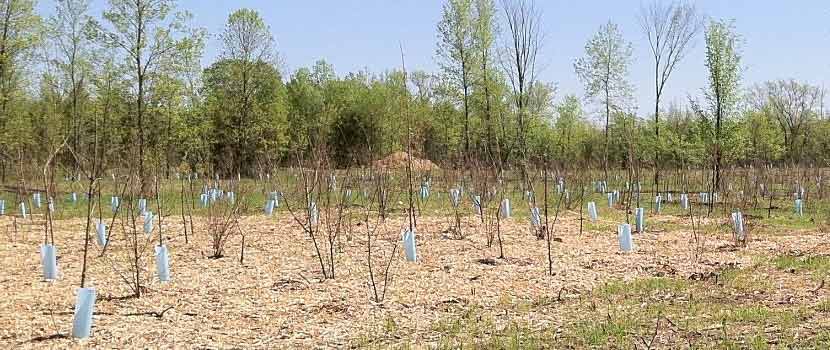
The other major issue encountered with this tree is stem girdling roots. This is an insidious but preventable problem where roots develop at odd angles to the trunk and slowly strangle it. It typically takes about 15-20 years for the tree to succumb to girdling roots, though the tree could live longer than this.
Whenever you see roots that are tangential to the tree trunk, or wrap around the base of it, you probably have a girdling root problem. The main culprit is almost always that the tree was planted too deep.
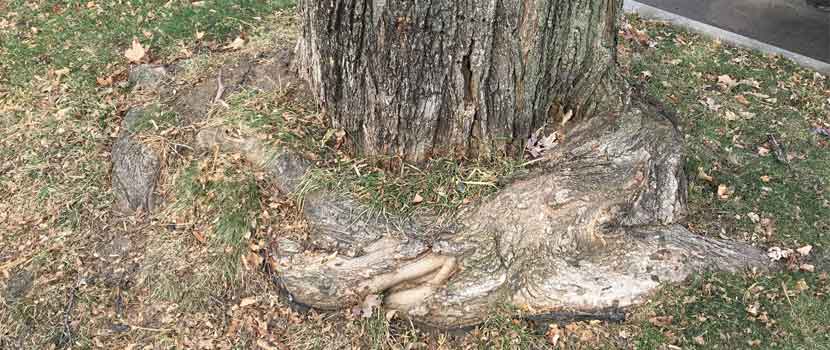
You frequently see this with balled and burlap planted trees (most street trees). This is because during the digging and packaging process for these trees, soil usually gets deposited on top of the root ball. Then, when the tree is planted, the tendency is to put them even a bit deeper in the ground. Even a few inches of soil above the normal root collar is enough to cause girdling roots.
A tree that does not flare out at least a bit where it enters the ground is a good indication that it was planted too deep. There is an old saying in the nursery industry that is especially true for this tree: “Too high, never die. Too low, never grow.”
Uses: From Furniture to Sweet Syrup
Also known as “hard maple,” sugar maple wood has a variety of commercial uses. The wood is strong and has an attractive grain. It is still commonly used in everything from furniture and cabinet making, to flooring, and tool handles.
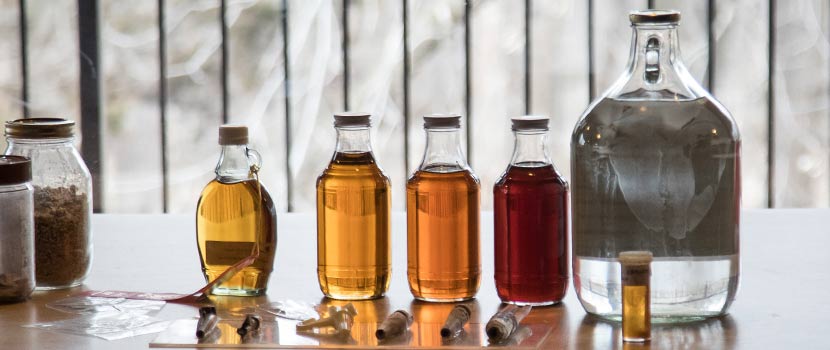
Of course, what this tree is best known for is maple syrup production. The commercial start of the season in Minnesota is usually around February 15, but this depends on the type of spring we have. In general this start date is anywhere from two weeks to one month behind other states (for example, Vermont typically starts around January 1).
Sap flow begins when daytime temperatures rise above freezing and nighttime temperatures drop below freezing. These alternating temperatures create a pressure differential in the stem of the tree.
The mechanism is kind of neat. At night, the cold temperatures create a negative pressure in the tree, which makes it draw water into the stem from the roots. Some of this water freezes. Then during the day, as the temperatures rise above freezing, the water thaws and expands, which creates a positive pressure and sap flow.
Once the tree begins to leaf out, the flow stops and the season is done. A typical Minnesota maple syrup season lasts about 31 days.
All trees in the Acer genus can be tapped (even boxelder!), but sugar maple sap has the highest sugar content of them all. Sugar maple sap is typically around 2 percent sugar.
If you think you might like to try your hand at maple syrup production, it is pretty easy to do, but know that it takes about 40 gallons of sap to yield one gallon of syrup.
Evaporating this much liquid is no joke. It usually takes 20-24 hours to make one gallon of syrup. Alternatively, it is possible to freeze and refreeze the sap in shallow pans over numerous days. By removing the layer of ice that forms every morning, the sap is slowly condensed to syrup. Just remember that trees smaller than 10 inches in diameter should not be tapped.
Of course, Europeans were not the first people to discover the sweet sap of the sugar maple tree. Various American Indian tribes had long been collecting sap prior to European settlement.
Want to learn more about maple syruping? Tune in to The Wandering Naturalist podcast this month for three episodes devoted to maple syrup!
Adaptation and Predictions for a Changing Climate
In Minnesota, the sugar maple could be significantly impacted by changes in our climate. The overall population of this tree within the state is not expected to change significantly, but the range of suitable growing conditions is expected to move significantly north and west. This will likely mean that we will see a reduction in the importance of this tree in our area over the next 50–100 years.
The maple syrup industry has already seen an impact from climate shifts. In general, the season now starts about a week earlier and ends about 12 days earlier than it did even 50 years ago. In other words, spring is coming earlier and ending sooner than in the past. A shorter freeze/thaw season means less maple syrup production.
In addition, changing precipitation patterns, especially a reduced snow pack (which helps to insulate tree roots), have had an overall negative impact on tree health, and thus, syrup production.
Sugar maples are iconic trees that are staples of Minnesota’s Big Woods region. They also have a long and storied relationship with humans. To learn more about sugar maples and the syrup-making process, check out one of Three Rivers’ maple syruping programs.
Like what you read? Scroll to the bottom of the page and sign up to be the first to learn about new blog posts!
About the Author

Paul is the Manager of Forestry and Horticulture at Three Rivers Park District – a position he has held for the past 10 years. Prior to that he was stomping around the wilds of Milwaukee County as the natural areas manager, and before that he was stomping around the wilds of New York City (yes, there are some) as an environmental restoration project manager for the New York City Department of Parks and Recreation. In his spare time he enjoys installing flashing on old windows.
Related Blog Posts
Species Spotlight: Northern Red Oak Trees
By: Paul Kortebein
Northern red oak trees are one of the most common trees in our area. Learn more than you ever knew you wanted to know about northern red oaks in this not-quite-comprehensive-but-pretty-close post.
Why Do Some Trees Keep Their Leaves Through Winter?
By: Paul Kortebein
Now that fall is long past, why are some trees still hanging onto their leaves? Learn what's happening in these trees and why it may be beneficial to them.
Why Do Leaves Change Color in the Fall?
By: Laurel Sundberg
The greens of spring and summer have faded and fall's color show is taking their place. Why and how does this rainbow of color appear each year?
